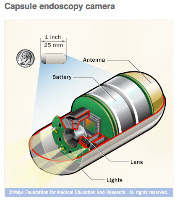Frosted sugar cookies, pumpkin pie, cheese balls, pecan pie, hand-dipped chocolates, Reeses peanut butter trees, cranberries, hot cocoa, caramel popcorn, ANY popcorn -- just some holiday yummies ubiquitous this time of year.
With all the delicacies that come with the holidays, I’ve
found myself turning down crisp, green salad, carrot sticks, lettuce for
sandwiches, rich chocolates, cookies that smell awfully good, peppermint ice
cream and chocolate cake, creamy pseudo-salads, gravy. . . You get the picture.
I frequently hear the question, “You don’t like ___________?” I respond, “I do like
_____________, but it doesn’t like me.”
Ahh, one of life’s plentiful paradoxes – unrequited love!
And I, like so many others whose affection is not reciprocated, must find
something else to fill my need. Something with limited fat and fiber, or with the kind of fat and fiber to which I don't have a gut reaction. :-)
 You see, I still have a ticking time bomb stuck in my gut – an
indigestible, plastic and metal camera-in-a-capsule that I swallowed to take
photos of my small intestine’s insides. Bowel obstructions were becoming too
frequent, and my gastroenterologist said this would give him the best
information to determine how best to tackle the problem. Problem is, though, my
jejunum (the middle, longest part of the small intestine) is too narrow from
inflammation and scarring at some point, to let the capsule pass. So there it
sits, awaiting the January 8 retrieval attempt date. Always threatening to
block the stricture that, so far, still allows stuff to squeeze tightly through
to it’s (and my) final end.
You see, I still have a ticking time bomb stuck in my gut – an
indigestible, plastic and metal camera-in-a-capsule that I swallowed to take
photos of my small intestine’s insides. Bowel obstructions were becoming too
frequent, and my gastroenterologist said this would give him the best
information to determine how best to tackle the problem. Problem is, though, my
jejunum (the middle, longest part of the small intestine) is too narrow from
inflammation and scarring at some point, to let the capsule pass. So there it
sits, awaiting the January 8 retrieval attempt date. Always threatening to
block the stricture that, so far, still allows stuff to squeeze tightly through
to it’s (and my) final end.
So, here are some yummy things I CAN eat while you’re
enjoying whole apples, oranges, carrot sticks and pecan pie:
- · Yogurt with peaches, bananas, or honey
- · Chocolate, vanilla and peanut butter frozen yogurt, with marshmallow, chocolate and peanut butter topping, respectively
- · Low-fat banana cream pie
- Candy Canes
- · Bananas
- · Peaches
- · String cheese
- · Jell-O loaded with peeled, shredded apple
- · Fruit and vegetable smoothies (Dave gave me Ninja blender for Christmas)
- · Fat-free chocolate pudding with fat-free cool whip
- · Low-fat chocolate cookies with vanilla or peppermint or peanut butter chips
- · Low-fat banana chocolate chip or pumpkin chocolate chip cookies or muffins
- · Banana or pumpkin bread
- · Better-than-sex cake (the way I make it, anyway)
- · Oatmeal with cinnamon, brown sugar and vanilla soy milk
- · Gingerbread cookies (thoroughly chewed, of course)
- · Scrambled eggs with cottage cheese and avocado
- · Mashed potatoes (no peels)
- · Peppermint crunch Junior Mints
- · Turkey (well-chewed, of course)
- Toast with seedless jam or honey
- Thoroughly steamed carrots, green beans and asparagus
- · Lots of things that I adapt to be low fat and low fiber by tweaking ingredients
On the left, a more slender me with my son, Samuel just before he left for his mission to France. in July 2010. I hadn't started the cycle of bowel obstructions followed by high-dose Prednisone, tapering off the steroid, then the bowel obstructing again, etc. I weighed about 120 pounds.
 On the right, I am with my dear Husband, Dave on our Daughter, Megan's wedding day in October 2011. I'd been in the hospital two months earlier with a bowel obstruction, and the Prednisone was starting to change me, both inside and out.
On the right, I am with my dear Husband, Dave on our Daughter, Megan's wedding day in October 2011. I'd been in the hospital two months earlier with a bowel obstruction, and the Prednisone was starting to change me, both inside and out.
 Both of these photos were taken in my kitchen. The one on the left in early summer, 2012.
Both of these photos were taken in my kitchen. The one on the left in early summer, 2012.
The one on the right, about two months ago.
The scales say 139.
 On the right, I am with my dear Husband, Dave on our Daughter, Megan's wedding day in October 2011. I'd been in the hospital two months earlier with a bowel obstruction, and the Prednisone was starting to change me, both inside and out.
On the right, I am with my dear Husband, Dave on our Daughter, Megan's wedding day in October 2011. I'd been in the hospital two months earlier with a bowel obstruction, and the Prednisone was starting to change me, both inside and out. Both of these photos were taken in my kitchen. The one on the left in early summer, 2012.
Both of these photos were taken in my kitchen. The one on the left in early summer, 2012.The one on the right, about two months ago.
The scales say 139.
Happy New Year, everyone! Bon appetite!
Beth













